You’ve hit that dreaded plateau.
Your course is selling okay. Maybe even pretty well.
But your income feels stuck.
You’re working harder, creating more content, launching more often. And yet your bank account isn’t reflecting all that extra effort.
Here’s the thing most course creators miss: The biggest revenue opportunities aren’t in creating more courses.
They’re in maximizing what you’ve already built.
Build a thriving community membership first
Before we dive into fancy strategies, let’s talk foundation.
Social media followings are like rented land.
Algorithms change.
Email lists get buried in spam folders.
But communities? Communities are owned real estate.
Sahil Bloom figured this out early.
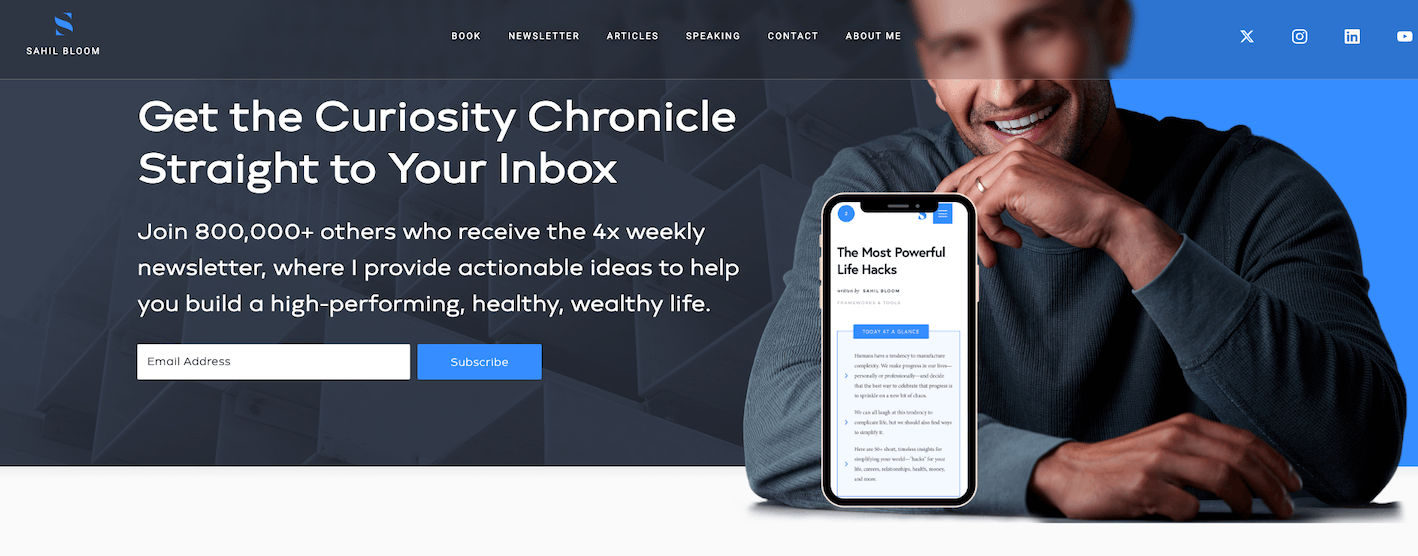
He started with a simple newsletter to family and friends during the 2020 lockdowns.
That newsletter now generates over $70,000 monthly and became the foundation for his entire business empire.
The magic wasn’t in content alone. It was building a tribe of people who knew each other and engaged regularly.
👉 The future of e-learning isn’t more information. With AI democratizing knowledge, the real value lies in connection, accountability, and implementation support.
Your community becomes your most valuable asset because it’s where relationships happen. And relationships buy repeatedly.
Whether you choose Skool for gamified engagement, Circle for robustness, or Kajabi for all-in-one functionality, the platform you choose matters less than the people you gather.
Start building your community platform today, even if it’s just 10 people. Those 10 engaged members are worth more than 1000 passive followers.
Leverage strategic affiliate partnerships

Most course creators get affiliate marketing completely backward.
They think it’s about selling other people’s stuff to their audience.
But you can partner with creators who already have communities that trust their leaders.
Here’s where most course creators are missing out: bloggers, YouTubers, newsletter writers, and community leaders are sitting on goldmines of engaged audiences.
And many of them are actively looking for quality products to recommend that actually help their people.
The types of partners to target:
- Bloggers with 50,000+ monthly readers in complementary niches
- YouTubers creating content for your ideal students
- Newsletter writers with engaged subscriber bases
- Facebook group owners running active communities
- LinkedIn influencers posting regularly in your space
- Podcast hosts interviewing people in your industry
Once you identify the influencers who can promote your product.
Here’s what to do:
- Identify creators with 5,000+ engaged followers in your niche
- Offer attractive affiliate commissions (30-50% for digital products)
- Create exclusive bundles or early-bird pricing for their audience and apply these advanced affiliate marketing techniques to scale what works
- Provide custom landing pages and promotional materials
- Track results and build long-term relationships with top partners
This beats Facebook ads because you’re getting “endorsed” introductions instead of interrupting people’s feeds.
When a trusted creator says “Hey everyone, I found this amazing course that solved my problem,” that’s worth 10x more than any ad.
💡 Pro tip: Start with smaller creators first. Build relationships and case studies before approaching larger influencers. And always deliver value to their audience first – answer questions, share insights – before pitching anything.
👉 See our affiliate marketing statistics for context – 75+ Shocking Affiliate Marketing Statistics
Create “implementation days” as premium add-ons

Your course teaches the what. Implementation days deliver the how.
Most students buy courses and never finish them. It’s not because the content is bad, but because they get stuck during execution. They have questions, lose momentum, or simply need accountability.
So, instead of offering more content, offer implementation support.
You can do this with the monthly virtual co-working sessions where students work through your course materials with your live guidance.
Price these at $97-297 per session.
Why?
Because accountability and direct access to you is worth more than another video module.
Here’s the framework that works:
- 3-hour virtual sessions, maximum 25 participants
- First hour: Q&A and troubleshooting roadblocks
- Second hour: Focused work time with breakout rooms
- Final hour: Progress sharing and next steps planning
Russell Brunson built an entire business model around this with his “One Funnel Away Challenge.”

Students didn’t just get training – they got daily implementation coaching, creating a transformation experience worth premium pricing.
The beautiful part?
You’re not creating new content. You’re providing implementation support for content that already exists.
Plus, you can turn these sessions into viral challenges that generate buzz and social proof for your main course.
Transform your course Q&As into an AI-powered knowledge base
Every question your students ask is gold.
Most creators answer once and move on. Smart creators turn those Q&As into recurring revenue streams.
Here’s the evolution: Use AI tools to organize every question and answer from your courses into a searchable knowledge base.
Market it as your “digital brain” – a subscription service where people can access years of your expertise instantly. This collective wisdom is worth way more than a single course price.
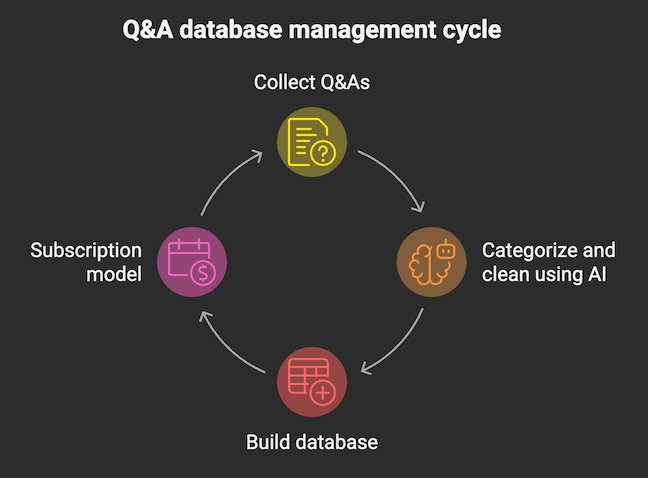
Here are the implementation steps:
- Collect all Q&As from courses, coaching calls, and emails
- Use ChatGPT or Claude to categorize and clean up responses
- Build a searchable database using tools like Notion or Airtable
- Create a subscription model at $29-97/month for access
- Continue adding new Q&As monthly to justify ongoing payments
This works because busy professionals will pay for instant access to specific solutions rather than watching hours of course content to find one answer.
The key is positioning this as a premium research tool, not just recycled content.
Frame it as “The only resource you’ll need for [your topic] – powered by real student questions and expert answers.”
Leverage AI tools to make this process seamless and scalable.
Develop micro-credentials for specific skills
Your comprehensive course covers everything. That’s also its weakness.
Students often need just one piece of your expertise, not the entire curriculum. And they want proof they’ve mastered it.

So, break your main course into 10-15 bite-sized certifications. Each focuses on one specific skill and includes:
- 45-60 minutes of focused training
- A practical assignment
- A completion certificate with your branding
Price each at $47-97. Students can buy individual credentials or the complete certification pathway.
Why this works:
- Lower commitment threshold increases conversions
- Students can showcase specific skills to employers
- You multiply your revenue per piece of content
- Creates natural upsells to your comprehensive program
Real-world example: A marketing course becomes certifications in Facebook Ads, Email Marketing, SEO Basics, Conversion Optimization, etc.
Each micro-credential serves students who need targeted learning while creating multiple touchpoints for revenue.
And here’s the kicker – students who complete 3-4 micro-credentials are prime candidates for your full program.
License your course frameworks to other creators
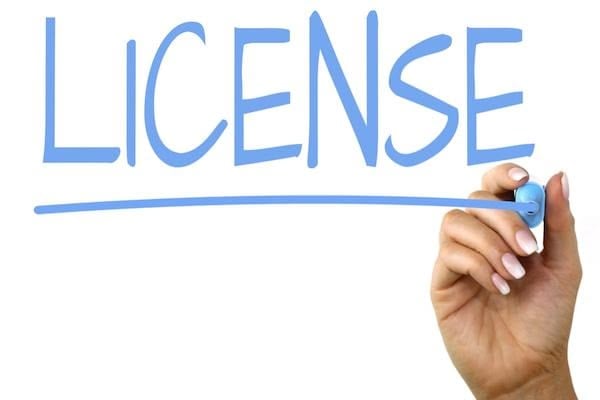
Instead of competing with other creators, make them your revenue partners.
Your course methodology – the step-by-step framework you’ve developed – can be licensed to creators in non-competing niches.
Here’s how licensing works:
- Package your core methodology into a “white-label” framework
- License it to coaches in different industries for $500-2000/month
- Provide training on how to implement your system
- Offer ongoing support and framework updates
- Take a percentage of their revenue (typically 5-15%)
A business coach might license your framework to fitness coaches, relationship coaches, or career coaches. Same proven system, different application.
The beauty?
You’re earning recurring revenue from work you’ve already done, while helping other creators succeed with your proven methodology.
👉 Important: Focus on creators who serve different audiences to avoid competition conflicts. You want collaboration, not confusion.
Create sellable AI software that implements your course teachings
This is strategy #7 – the one that will surprise you.

Imagine if your students could use software that puts your teaching into action for them!
Welcome to the future of course monetization.
Using no-code platforms like Bubble, Glide, or Lovable, you can create simple software tools that automate your course principles. Then sell these tools as premium add-ons or standalone products.
For example:
- A pricing strategy course becomes a pricing calculator app
- A content planning course becomes a content scheduling tool
- A sales funnel course becomes a funnel-building software
Students pay $47-297 for the course, then $29-97/month for the software that implements what they learned.
This strategy works because people will pay more for implementation than information.
They’d rather click buttons than remember frameworks!
👉 To get started, first find the most complex or time-consuming parts of your methodology. With AI tools making things easier than ever, you don’t need coding skills to build useful apps that help your students.
Transform student success stories into case study courses
Your students’ wins are your next revenue stream.
Every successful student implementation is a potential mini-course that others will pay premium prices to study.
Russell Brunson mastered this with his “One Funnel Away Challenge” case studies.

Instead of just celebrating student wins, he created detailed breakdowns of exactly how they achieved results – and sold those breakdowns as separate courses.
Here’s the framework:
- Identify your most successful students
- Document their entire implementation journey
- Create 60-90 minute case study courses priced at $197-497
- Include before/after metrics, exact strategies used, and lessons learned
- Market these as “real-world implementation guides”
Students will pay more for proven case studies than theoretical training because they see exactly what’s possible and how to replicate it.
💡 Pro tip: Get permission agreements upfront with all students to use their success stories for case study development. Make it part of your course enrollment process.
The magic happens when you show the messy middle – the failures, pivots, and breakthroughs. That’s where real learning happens.
Launch a “course creator co-op” membership
Stop competing. Start collaborating.
💡 Partner with 3-5 other course creators who serve similar (but not identical) audiences. Create a membership where you bundle complementary expertise.
Example partnership: Marketing expert + Sales trainer + Productivity coach + Mindset coach = Complete business transformation membership
Each creator contributes monthly content and takes turns hosting live sessions. Members get access to multiple experts for the price of one premium course.
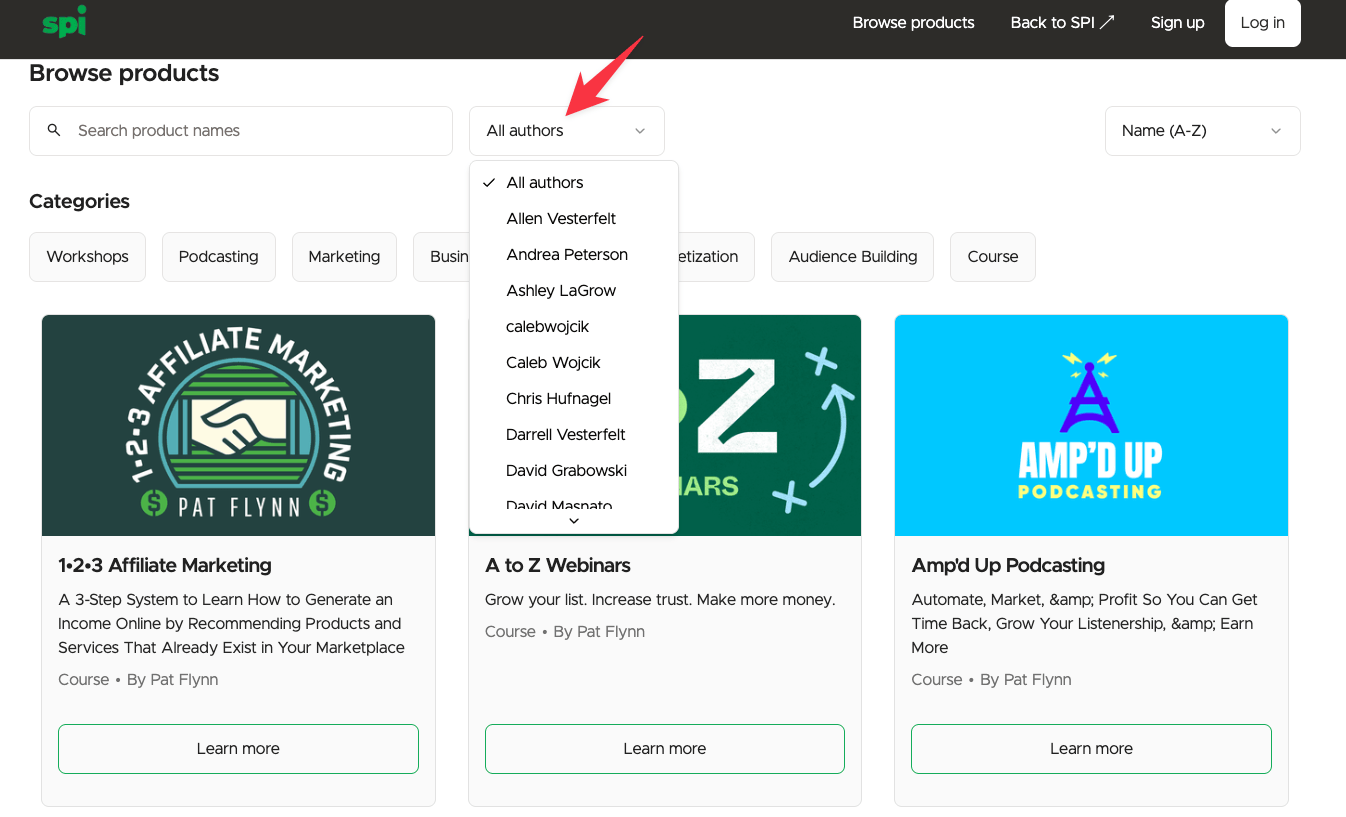
For example, Pat Flynn has built his entire community strategy around these collaborative partnerships, creating more value than any single creator could provide alone.
His approach focuses on genuine relationships and mutual value creation rather than one-off promotions.
Revenue split models:
- Equal splits regardless of contribution
- Performance-based splits tied to member retention
- Lead-based splits where the referrer gets higher percentages
The key is choosing partners whose expertise enhances rather than competes with yours. You want complementary skills that solve different parts of the same problem.
Expand globally with course translation services
Your English course is only reaching 20% of potential global customers.
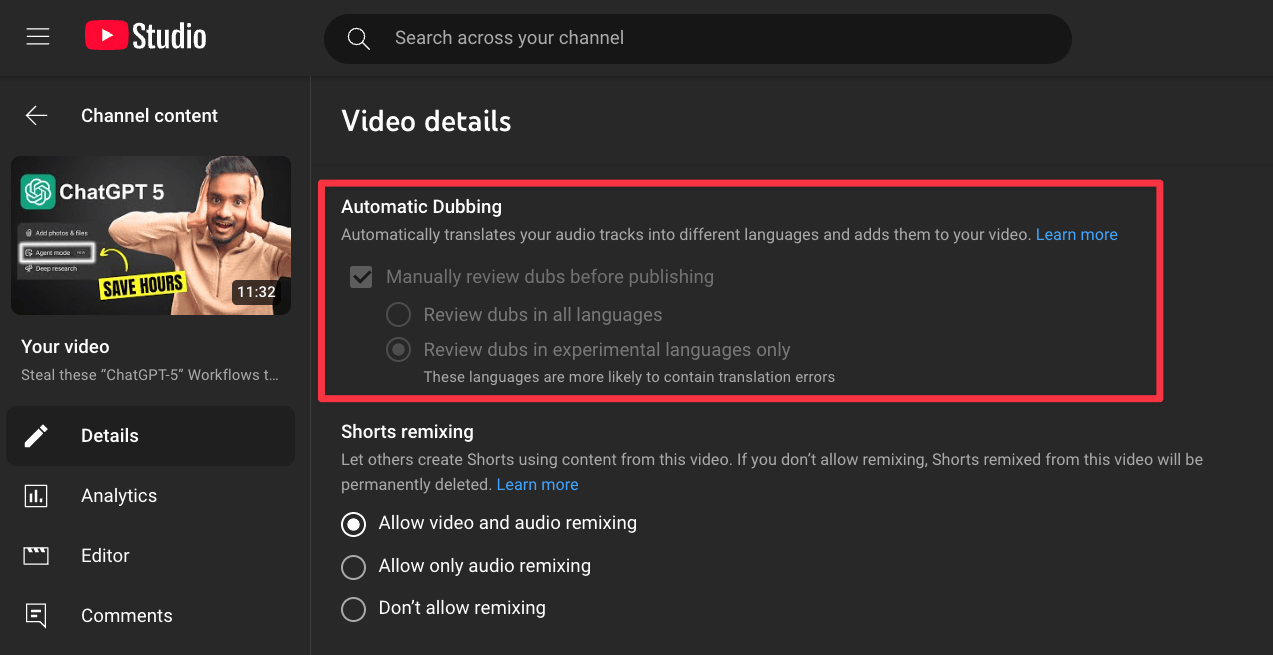
YouTube’s auto-dubbing shows creators how much people want content in different languages.
Yet most course creators completely miss this opportunity.
There are 2 ways to translate your course:
- Partner with translators: Find native speakers who are experts in your field. They translate and localize your content while you split revenue.
- AI-powered translation: Use tools like DeepL and Descript to translate scripts, then hire voice actors for target languages.
Start with Spanish, Portuguese, and French markets. They have high course consumption and less competition.
For pricing, charge 60-80% of your English course price to account for local purchasing power while keeping good margins.
This works especially well if you’re already creating YouTube content alongside your courses. The translation system benefits all your content types.
Create course companion physical products
Digital fatigue is real.
Physical products create tangible value that students cherish.
Create high-margin physical add-ons like:
- Branded workbooks and journals ($29-47)
- Implementation checklists and templates ($19-29)
- Course-related tools and supplies ($47-197)
- Exclusive merchandise for community members ($24-67)
For this, you can use print-on-demand services like Printful or Gooten. No inventory risk, automatic fulfillment, and healthy profit margins.
🔑 The key is creating products that enhance the learning experience rather than just adding your logo to generic items. Think workbooks with guided exercises, not just branded notebooks.
Develop limited-time “challenge editions” of your course

Urgency drives action. Challenges create community.
Take your existing course content and repackage it as intensive 5-7 day challenges with live elements:
- Daily live coaching calls
- Private challenge community
- Real-time feedback and accountability
- Exclusive bonuses for participants
- Social sharing and competition elements
Price these challenge editions at 2-3x your regular course price because of the intensive support and community experience.
Why this works:
- Creates urgency and FOMO
- Builds stronger student relationships
- Generates social proof through shared experiences
- Provides premium pricing justification
- Can be repeated quarterly for recurring revenue
Students will pay more for transformation than information. Challenges promise transformation through intensity and community support.
Final thoughts
These strategies work together.
A $2,000/month course business becomes a $20,000/month education empire when you stop thinking about single product sales and start building an ecosystem of value.
The creators making 7 and 8 figures aren’t just teaching more. They’re monetizing smarter.
Which strategy will you implement first?







